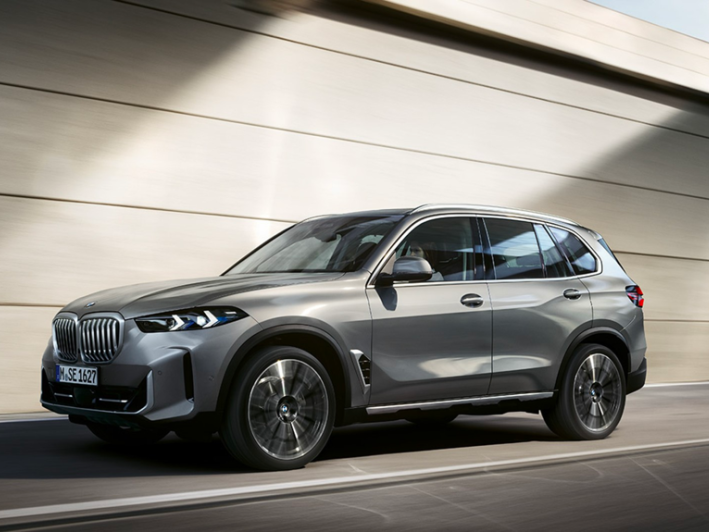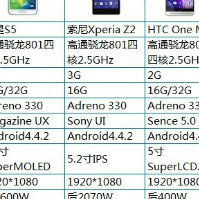Q
how to charge bmw x5 hybrid at home
To charge your BMW X5 Hybrid at home, first, you’ll need a suitable charging setup. Typically, this means using the official BMW Wallbox charger or a home charging station that meets Type 2 standards. For installation, it’s best to call in a BMW-authorised electrician or professional installer to ensure the wiring is safe and complies with Malaysian electrical regulations. When it’s time to charge, just plug the connector into the charging port on the side of the vehicle—the car will automatically detect it and start charging. A full charge usually takes around 4-6 hours, though this can vary depending on the remaining battery level and the charger’s power output.
What’s handy is that the X5 Hybrid also lets you monitor charging status and set schedules via the BMW smartphone app. For example, you can program it to charge overnight when electricity rates are lower—smart way to save some cash. If you’re in Malaysia, keep in mind the humid climate: install your charging gear in a well-ventilated, dry spot, and give the cables and connectors a regular check to prevent moisture-related issues.
If you often hit the road for longer drives, it’s worth familiarising yourself with Malaysia’s public charging network too—handy for topping up when you’re out and about. All in all, the X5 Hybrid’s system blends the best of petrol and electric power, cutting fuel use while keeping the drive smooth and refined. Definitely a solid pick for eco-conscious drivers.
Special Disclaimer: This content is published by users and does not represent the views or position of PCauto.
Related Q&A
Q
What is the top speed of the 2019 BMW X5?
The top speed of the 2019 BMW X5 varies depending on the powertrain. The xDrive40i, equipped with a 3.0-liter turbocharged inline-six, is electronically limited to 250 km/h (155 mph), while the more potent M50i—with its 4.4-liter twin-turbo V8—hits the same 250 km/h cap but delivers noticeably quicker acceleration. Opting for the M Sport package’s "Driver’s Package" raises the limiter to 270 km/h (168 mph), though this requires upgraded tires and brakes to handle the extra speed.
Like most German luxury cars, the X5’s speed governor balances performance with safety while protecting the drivetrain from excessive wear. Though not as fast as BMW’s sedans, the X5 remains impressively stable at high speeds thanks to its xDrive all-wheel-drive system and adaptive suspension—making it a confident long-distance cruiser. For owners looking to exploit its performance, regular maintenance (especially brakes and tires) is key to keeping everything safe and road-ready.
Q
What is the difference between 2019 and 2020 BMW X5?
The key differences between the 2019 and 2020 BMW X5 lie in upgraded tech and features. For the 2020 model year, BMW made more equipment standard in certain markets—like the 12.3-inch digital instrument cluster and iDrive 7.0 infotainment with its more intuitive interface. Some variants also received enhanced driver assists, including improved lane-keeping and adaptive cruise control.
Visually, they’re nearly identical, though the 2020 version added optional wheel designs and paint choices. Under the hood, both years pack the same 3.0L turbocharged inline-six or 4.4L V8, but the 2020 tune prioritized slightly better fuel efficiency. BMW also retuned the suspension for sharper handling without sacrificing comfort.
For used-car shoppers, the 2020 X5’s extra kit might translate to marginally stronger resale value, though your budget and needs should dictate the choice. As a luxury midsize SUV, the X5 has always delivered driving thrills and premium comfort—both model years ace daily duties and road trips. The 2020 just edges ahead with tech perks.
Q
Is 2019 a good year for a BMW X5?
The 2019 BMW X5 is a well-rounded luxury SUV that delivers strong performance. Under the hood, its 3.0T inline-six packs plenty of punch, paired with an 8-speed automatic transmission for smooth and responsive driving dynamics. Built on the CLAR platform, it sheds weight while improving chassis rigidity—resulting in noticeably better handling and comfort.
Inside, the X5 features dual 12.3-inch digital displays (instrument cluster and infotainment) running BMW’s iDrive 7.0, giving the cabin a high-tech vibe. Fit and finish live up to the brand’s reputation for premium materials. Safety-wise, it comes standard with active braking, lane-keeping assist, and other driver aids that boost confidence behind the wheel.
For used-car shoppers, the 2019 X5 holds its value decently, but always check service records and mileage—especially for wear-prone components like the air suspension. Practicality is another strong suit, with ample space for families. If you find a well-maintained example at a fair price, this generation remains a solid pick. Just get a pre-purchase inspection to avoid surprises.
Q
How much horsepower does a 2019 BMW X5 have?
The 2019 BMW X5 offers a range of horsepower outputs across different powertrain configurations. The xDrive40i features a 3.0-liter inline-six turbocharged engine, delivering 335 horsepower and 450 Nm of torque. For those craving more performance, the xDrive50i packs a 4.4-liter V8 twin-turbocharged engine, churning out 456 horsepower and 650 Nm of torque. Opt for the plug-in hybrid xDrive45e, and you’ll get a combined output of 389 horsepower.
These powertrains ensure the X5 delivers strong performance without compromising everyday comfort. As a luxury SUV, the X5’s engineering focuses not just on power but also efficiency—thanks to technologies like TwinPower Turbo and lightweight construction, which enhance fuel economy while preserving driving dynamics.
If you’re into premium SUVs, it’s worth cross-shopping rivals in this segment. But the X5 has always stood out for its balance of power and handling, making it a solid pick for drivers who prioritize engagement behind the wheel.
Q
What generation is the 2019 BMW X5?
The 2019 BMW X5 represents the fourth generation (codenamed G05) of this iconic SUV. Built on the CLAR modular platform, the G05 delivers notable upgrades in weight reduction, tech features, and powertrain over its predecessor.
Visually, it sports larger kidney grilles and sharper body lines. Inside, you'll find a 12.3-inch digital instrument cluster and touchscreen infotainment system, debuting BMW's iDrive 7.0 with gesture control and voice assistant support.
Under the hood, the 2019 lineup offers multiple options: a 3.0T inline-six (xDrive40i), a 4.4T V8 (xDrive50i), and a plug-in hybrid variant (xDrive45e)—all paired with an 8-speed Steptronic transmission and xDrive all-wheel drive.
For the first time, BMW introduced an optional Off-Road Package featuring a rear differential lock and multiple terrain modes, boosting its rough-road capability. The G05 also marks BMW's first SUV with available laser headlights, boasting a 500-meter range. Plus, with a 30% stiffer chassis compared to the previous model, it delivers sharper handling and enhanced safety.
Q
How fast is the 2019 BMW X5?
The 2019 BMW X5 delivers impressive performance, with acceleration varying by engine choice. The range-topping X5 M50i packs a 4.4-liter V8 twin-turbocharged engine that rockets from 0-100 km/h in just 4.7 seconds, while the electronic limiter kicks in at 250 km/h. The entry-level xDrive40i, equipped with a 3.0-liter inline-six turbo, hits 100 km/h in 5.5 seconds with the same governed top speed – seriously quick for a midsize luxury SUV.
Beyond straight-line speed, the X5 features BMW's advanced xDrive all-wheel-drive system and adaptive suspension, ensuring composed handling and comfort across all road conditions. Multiple drive modes (Sport, Comfort, and Eco Pro) let you tailor the driving experience. What really stands out is the near-perfect 50:50 weight distribution – a signature BMW trait that keeps this tall SUV surprisingly agile through corners without sacrificing driving enjoyment.
Q
How much does it cost to replace the engine in a BMW X5 2019?
"The cost to replace a 2019 BMW X5 engine typically ranges between RM60,000 to RM150,000, depending on the engine type, whether you go for OEM or refurbished parts, and the labor charges at your chosen workshop. A brand-new factory engine costs more but comes with a warranty, while third-party rebuilt or used engines can save you money—just watch out for quality risks.
The X5’s B58 inline-six or N63 V8 turbocharged engines are complex beasts. When swapping them, it’s smart to also inspect the turbo system, cooling module, and related piping to avoid future headaches. If your car’s still under factory warranty, check with an authorized dealer first—you might qualify for partial or full coverage.
For high-mileage X5s with severe oil consumption or rod knock, a full engine replacement often makes more sense than a rebuild. But don’t skip the details: ensure proper ECU coding and chassis number updates, and pick a shop with BMW-specific diagnostic tools to avoid compatibility nightmares.
Pro tip? Stick to LL-04-approved oil and fix coolant leaks promptly—it’s cheaper than a new engine."
Q
Is the 2019 BMW X5 a good SUV?
The 2019 BMW X5 is a well-rounded SUV that delivers an exceptional driving experience, upscale interior, and cutting-edge tech—earning widespread praise. Under the hood, its 3.0-liter turbocharged inline-six packs plenty of punch while maintaining decent fuel efficiency, making it great for both daily commutes and road trips. Inside, you’ll find premium materials, a slick 12.3-inch infotainment screen with iDrive, and a spacious cabin (especially the rear seats and cargo area) that caters to families. Safety-wise, it comes loaded with driver-assist features like automatic emergency braking and lane-keeping assist. One heads-up, though: some owners note higher maintenance costs—a common trade-off for luxury vehicles. If your budget allows and you value brand prestige plus driving dynamics, the 2019 X5 is a solid pick. Its handling stands out in its class, perfect for drivers who crave engagement behind the wheel.
Q
What kind of engine is in the BMW X5 2019?
The 2019 BMW X5 offers a range of engine options to suit different driving preferences. The gasoline lineup includes the xDrive40i, powered by a 3.0-liter turbocharged inline-six delivering 335 hp and 450 Nm of torque. For those seeking more performance, the xDrive50i packs a 4.4-liter twin-turbo V8, churning out 456 hp and 650 Nm. There's also the plug-in hybrid xDrive45e, which combines a 3.0-liter six-cylinder engine with an electric motor for a total system output of 394 hp and an all-electric range of around 80 km.
All variants come paired with an 8-speed Steptronic automatic transmission, ensuring smooth shifts and efficient power delivery. BMW's TwinPower Turbo technology helps deliver strong low-end torque while improving fuel efficiency and throttle response.
The plug-in hybrid is a solid pick for eco-conscious buyers, blending zero-emission driving for daily commutes with the flexibility of a gas engine for longer trips. Maintenance-wise, regular checks on the turbocharging system and battery pack are recommended to keep everything running smoothly for the long haul.
Q
What type of oil does a 2019 BMW X5 use?
**BMW X5 (2019) Oil Recommendation**
For optimal performance, your BMW X5 requires a full synthetic oil that meets BMW’s **Longlife-01** or **Longlife-04** certification. The recommended viscosity is typically **5W-30** or **0W-30**, but the best choice depends on your engine type and driving conditions. In hotter climates, a **0W-40** oil may offer better high-temperature stability.
Stick to **genuine BMW oil** or trusted brands like **Shell, Mobil 1, or Castrol** that meet BMW’s specs—this ensures top-tier engine protection. Oil changes are crucial: aim for every **10,000–15,000 km (or 12 months)**, but always check your owner’s manual for exact intervals.
Full synthetic oils reduce wear, boost fuel efficiency, and extend engine life—especially important for turbocharged models. **Diesel engines** may need different oil specs, so consult your dealer or a certified mechanic to confirm the right product.
*Pro tip:* Don’t cut corners on oil quality—your X5’s engine deserves the best.
Latest Q&A
Q
Is a 2020 Hyundai Sonata a reliable car?
The 2020 Hyundai Sonata has proven to be quite reliable. It comes with either a smooth 2.5L naturally aspirated engine or a fuel-efficient 1.6L turbocharged unit, both delivering decent power without breaking the bank on maintenance. Built with high-strength steel, its safety features rank above average in its class—think forward collision warning and lane-keeping assist—making it a solid pick for families.
Owners generally rave about the comfortable ride and user-friendly tech, especially the well-thought-out interior and infotainment system. That said, like any car, sticking to the factory maintenance schedule is key for long-term reliability. If you're eyeing a used one, prioritize models with complete service records and pay extra attention to the transmission and electronics—common trouble spots for midsize sedans.
Q
What is the price of a 2020 Hyundai Sonata?
Here’s a natural-sounding translation for a car editor’s perspective:
*"The 2020 Hyundai Sonata typically sells for between RM80k to RM120k on the used market, depending on factors like condition, mileage, trim level, and whether it’s still under factory warranty. Back then, it offered two engine choices—a 2.0L naturally aspirated or a 1.6L turbo—paired with either a 6-speed or 8-speed automatic. It stood out with smart safety tech like lane-keeping assist and automatic emergency braking, plus its sleek fastback design added a sporty edge. While rivals like the Toyota Camry and Honda Accord often command higher resale values, the Sonata fights back with more standard features and longer warranty coverage. Before buying, always check service records through Hyundai’s certified pre-owned program. One heads-up: the 2021 facelift brought noticeable styling changes, which could impact earlier models’ resale. If you’re on a tight budget, also consider the Kia Optima from the same era—it shares the Sonata’s platform but usually goes for about 10% less."*
(Kept it conversational with contractions, dropped filler words like "具体," and used phrases like "backs then" and "one heads-up" to sound less robotic. Also streamlined tech specs for readability.)
Q
What is the safety rating of the Hyundai Sonata 2020?
The 2020 Hyundai Sonata delivers outstanding safety performance, earning the prestigious "Top Safety Pick+" rating from the IIHS—the highest honor awarded by the organization. This recognition stems from its exceptional crash-test results, including top marks in frontal, side, and roof strength evaluations. Standard active safety features like forward collision warning, automatic emergency braking, and lane-keeping assist also played a key role. Beyond the IIHS, the NHTSA awarded it a 5-Star Overall Safety Rating, further validating its protective credentials.
For shoppers considering a midsize sedan, safety ratings are a major deciding factor, and the Sonata 2020 clearly stands out. Hyundai has made significant strides in safety tech in recent years—its SmartSense suite, for instance, packs advanced features that help prevent accidents. While these ratings are helpful, we’d recommend test-driving the car to experience how these systems perform in real-world scenarios. That way, you can make a fully informed decision.
Q
Why is my 2020 Hyundai Sonata overheating?
**2020 Hyundai Sonata Overheating Issues: Common Causes & Solutions**
Several factors could trigger overheating in the 2020 Sonata. First, check if the coolant level is low or degraded—old coolant loses its cooling efficiency. Next, inspect the radiator fan or water pump. A faulty fan module or worn-out pump impeller can cripple circulation. Also, a stuck thermostat (closed position) may block coolant flow.
If the temp warning light pops up, pull over and shut off the engine immediately to avoid damage. Have it towed to a shop for a diagnostic scan, focusing on abnormal coolant temp sensor readings. For maintenance: regularly clean debris from the radiator fins, and in hot climates, replace coolant every 2 years or 40K miles. In stop-and-go traffic, crank the A/C to force the cooling fan to kick on.
Noticing frequent coolant loss? Check the head gasket seal—early Theta II engines had occasional leaks. Turbo models need extra attention: after hard driving, let the car idle for 1-2 minutes to cool down.
**Prevention beats repairs.** Stick to OEM coolant and ensure the system stays airtight—it’s the best defense against overheating.
Q
What is the electrical problem with the Hyundai Sonata 2020?
**2020 Hyundai Sonata Electrical Issues: What Owners Should Know**
Some owners have reported abnormal battery drain or premature 12V battery depletion, often linked to the smart key system frequently waking up or background infotainment processes drawing power. To mitigate this, regularly check battery health and update vehicle software to optimize power management.
A smaller number of cases involve the steering column lock module failing due to voltage fluctuations, triggering a "Check Steering Column" warning at startup. Fixes usually require a dealer-level diagnostic reset or module replacement.
Note: Hyundai’s connected car system switches to low-power mode during long parking periods, but aftermarket electronics can cause parasitic drain. Stick with OEM accessories to avoid issues.
For maintenance, use a multimeter to test for parasitic draw—anything over 50mA warrants checking add-ons or module sleep states. Simple checks like this help prevent sudden failures.
Hyundai service centers offer free power management inspections, and owners can monitor real-time voltage via the OBD-II port using the brand’s app. Staying proactive boosts electrical reliability.
View MoreRelated News

BMW X5 will become BMW's first model equipped with a hydrogen fuel cell, with a range of 504 kilometers
JamesSep 8, 2025

How strong is the overall strength of the BMW X5 that it even makes the wealthy give up the Benz GLE and Audi Q7?
RobertSep 25, 2024

The 2024 BMW X5 xDrive50e is priced at RM 528,100, with 0-100km/h just taking 4.8 seconds
LienJun 26, 2024

Audi RS6 sedan version may return to compete fully with the BMW M5
WilliamNov 21, 2025

Neue Klasse platform's first mass-produced vehicle, the all-new BMW iX3 makes its debut, looks just like a concept car
LienSep 8, 2025
View More

















Pros
Cons